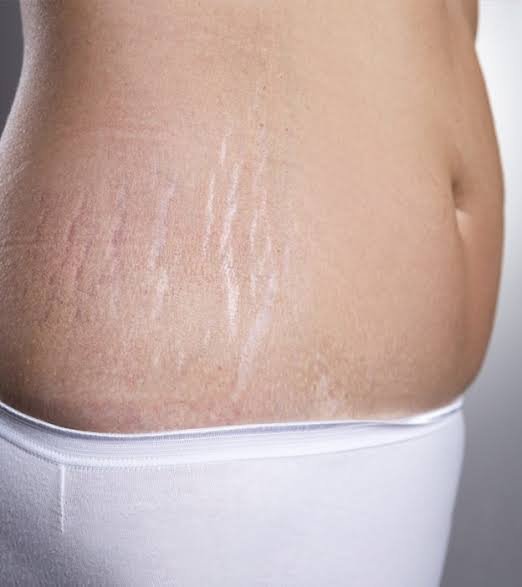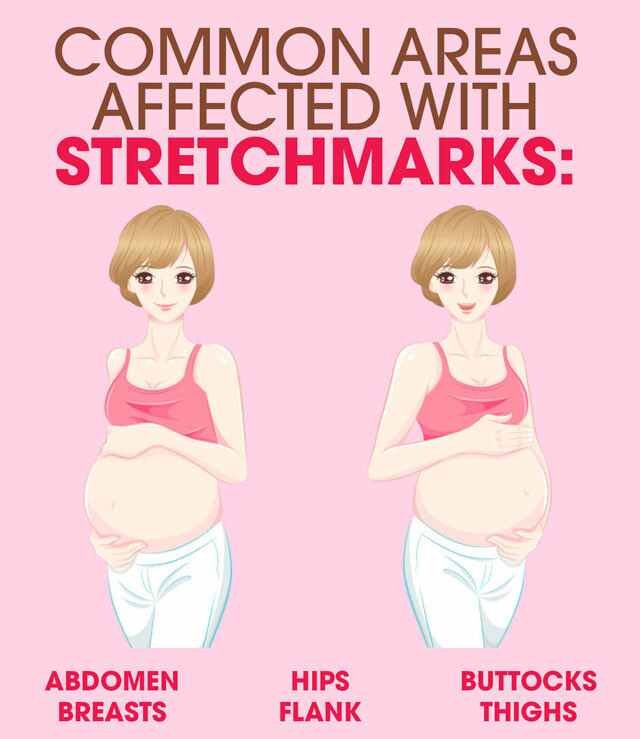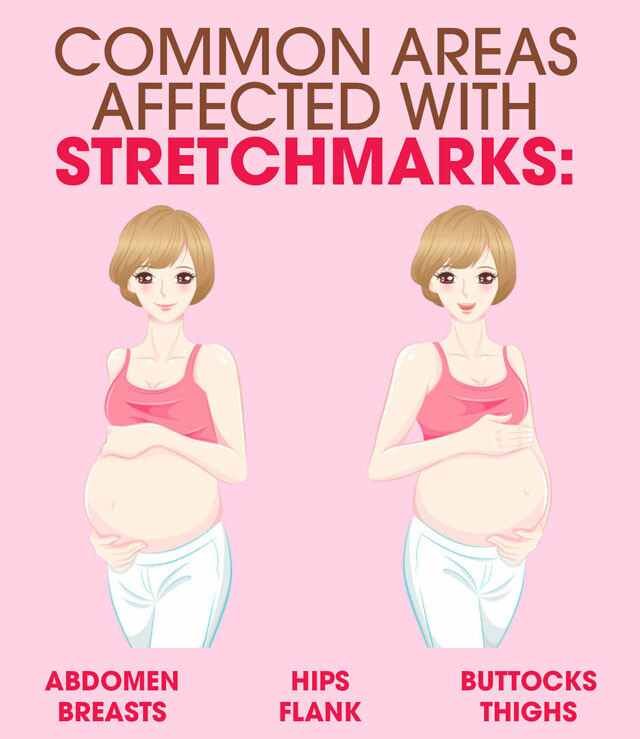Stretch marks are long, narrow streaks, stripes, or lines that develop on the skin. They occur when the skin is sudde

Anyone can develop stretch marks, although they tend to affect more women than men.
They can occur on a range of body parts, including the stomach, thighs, hips, breasts, upper arms, and lower back.
This type of scarring happens when the skin cannot resume normal form after a period of intense growth, often due to pregnancy, weight gain, weight loss, or puberty. Over 50 percent of women experience stretch marks during pregnancy.
Fast facts on stretch marks
Stretch marks are long, narrow streaks or stripes that occur when the skin is stretched too quickly.

Pregnancy, puberty, and rapid weight gain can all cause stretch marks.
There is little medical evidence available confirming the effectiveness of current treatments for stretch marks.
Stretch marks often fade over time without treatment and do not pose any serious long-term health risks.
Treatment and prevention
Treatment for stretch marks can be costly and is not always effective.
Unless an underlying condition is the cause, it is unlikely that your insurer will fund treatment. Stretch marks are seen as a cosmetic complaint.
Creams, gels, lotions, and cosmetic surgery have all been proposed as treatments for stretch marks, although there is little medical evidence to support the effectiveness of such treatments.
Current treatments are particularly limited in their ability to deliver long-lasting improvements for all skin types.
Stretch marks often fade over time and become unnoticeable. For women who develop stretch marks in pregnancy, these usually become less noticeable around 6 to 12 months after giving birth.
Makeup can be used to conceal stretch marks on more exposed areas of the body while they are more pronounced.
Creams, oils, and topical preparations
There is no high-quality evidence that applying lotions, creams, or oils to the skin can help the appearance of stretch marks.
Topical treatments are preparations containing active ingredients that are applied to the surface of the skin.
Several studies have compared the effects of topical treatments to preparations containing no active ingredients, or to the effects of receiving no treatment at all.
These investigations found no statistically significant difference between the groups, suggesting that currently available treatment options do not enhance or speed up the healing process of stretch marks.
Prevention
Stretch marks cannot always be prevented. However, the following steps may help to reduce the risk:
Maintain a healthy weight.
Avoid yo-yo dieting.
Eat a balanced diet rich in vitamins and minerals. Consuming a suitable amount of vitamins A and C can help support the skin, as well as the minerals zinc and silicon.
Aim for slow and gradual weight gain during pregnancy.
Drink six to eight glasses of water every day.

Takeaway
Stretch marks can be unsightly, but they are a common and often temporary problem.
They pose no long-term health risks, and treatment is normally intended to improve the self-image of the person with stretch marks.

Hi! I am a robot. I just upvoted you! I found similar content that readers might be interested in:
https://www.medicalnewstoday.com/articles/283651